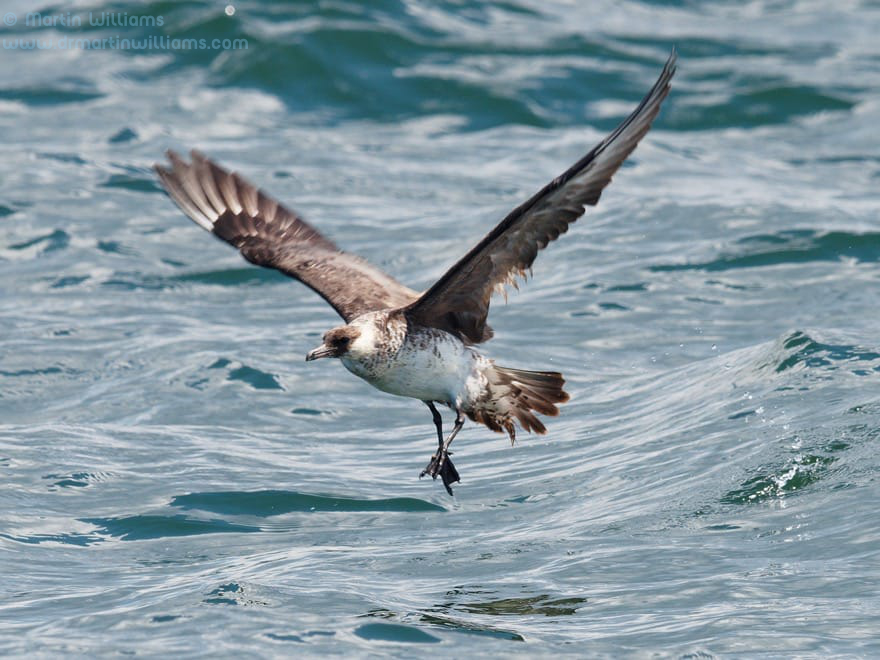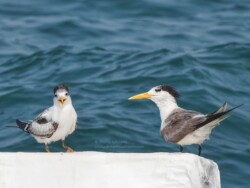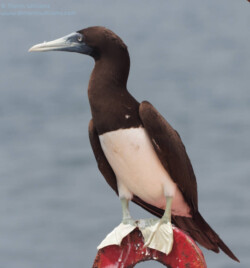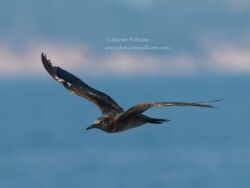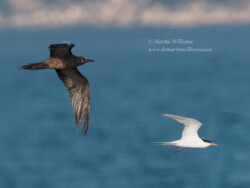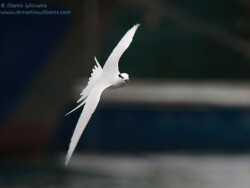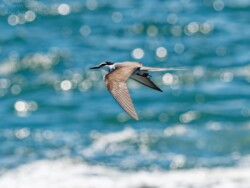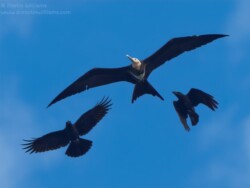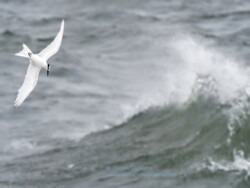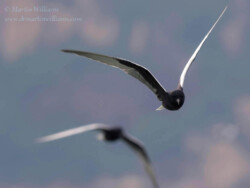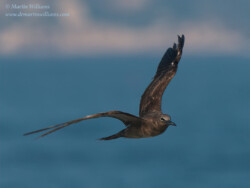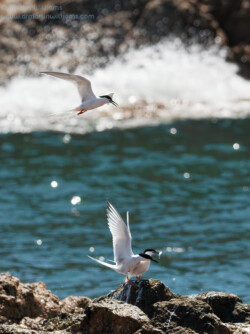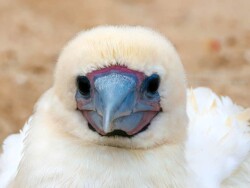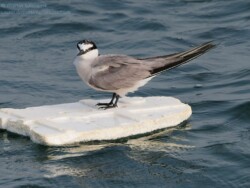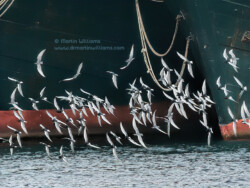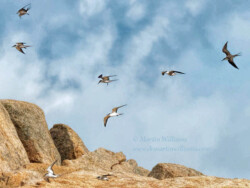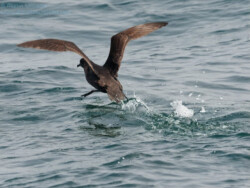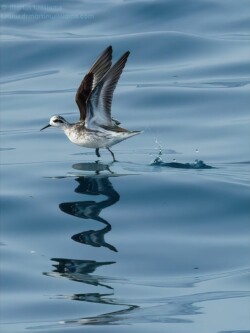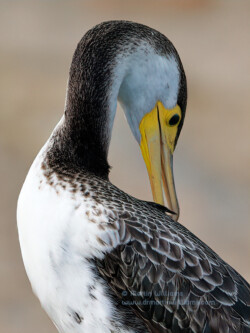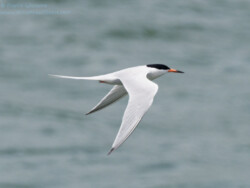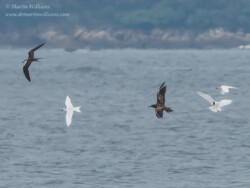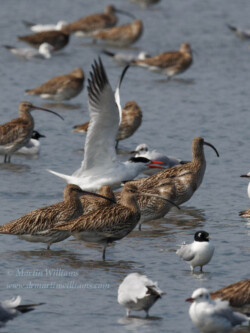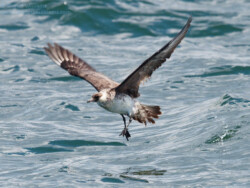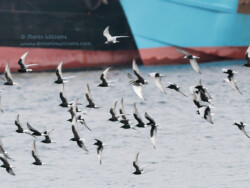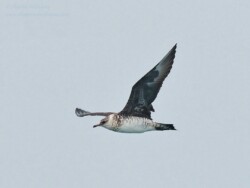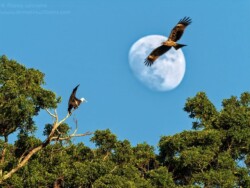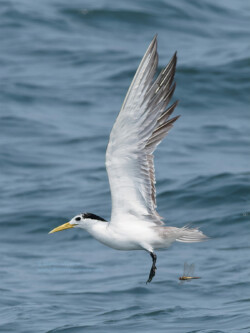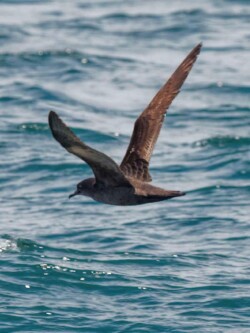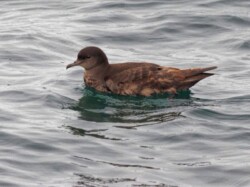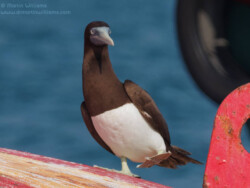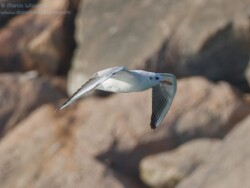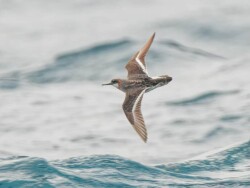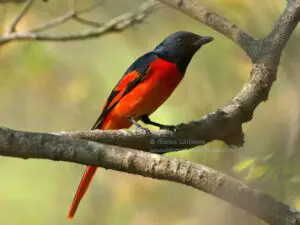Spring is the breeding season for the only seabirds that nest in Hong Kong – three species of terns: elegant birds like small gulls, also known as “sea swallows”.
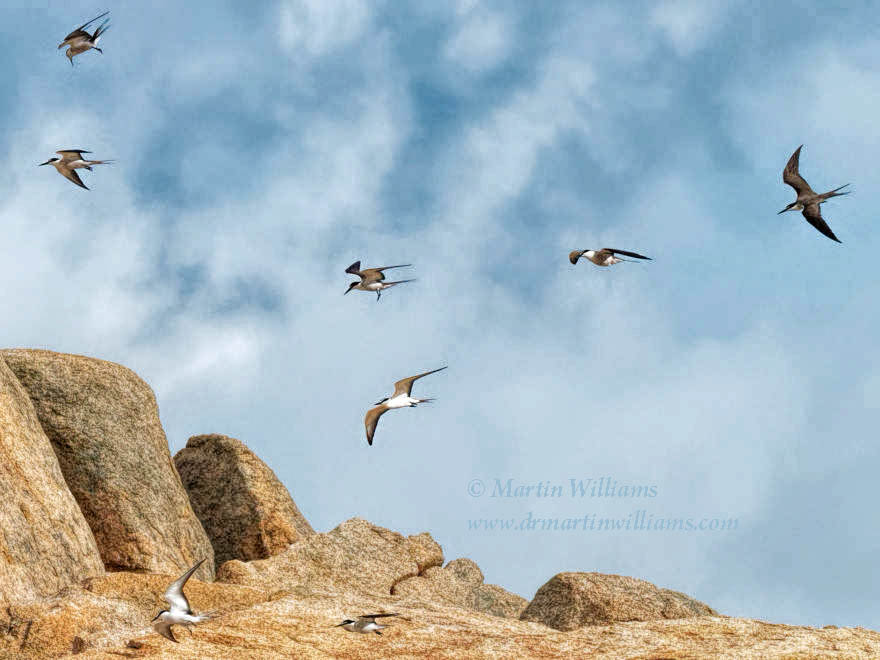
The terns nest in colonies on rocky islets in eastern waters, safe from many predators that could otherwise make ready meals of their eggs and chicks. One of these is Castle Rock, en route to Po Toi and beyond. And if you head that way soon, perhaps check out Castle Rock to hopefully enjoy a spell of tern watching.
They’re fast-flying, slender-winged birds, designed for travelling the oceans and hunting fish, which they snatch from the surface with slim beaks. The three species are relatively easy to identify at the colonies. Black-naped Tern is so pale that it can appear all white, except for a bold dark stripe from near the bill to the back of the head. Though a tad greyer above, Roseate Tern appears very similar, but has a neat black cap. And if you see any terns that are dark brown above, and white below, these are Bridled Terns.
While they are safe from land predators, the terns can be disturbed by humans who might arrive on the nesting islets, and perhaps become so alarmed that they desert eggs or young. So if you visit, please don’t land, or get too close with a boat.
Visitors include long-distance travellers
The other seabirds are all visitors to Hong Kong waters, some occurring in good numbers each year, while there are also a smattering of vagrants – recorded here only a handful of times, or perhaps only once.
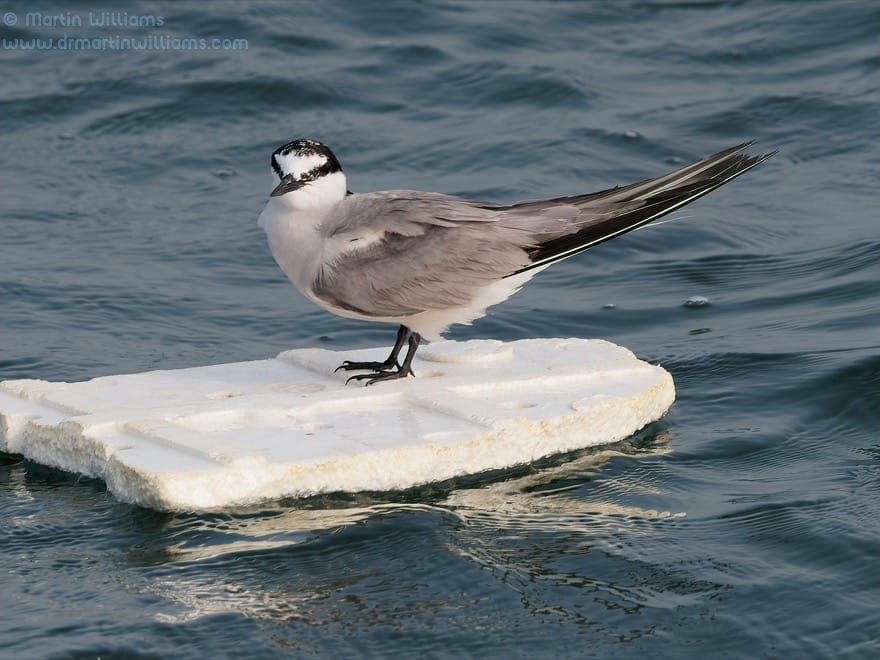
They include other species of terns – making identification tricker away from the breeding sites, as there are several lookalikes. One of the most notable of these is Aleutian Tern, which is like a grey cousin of Bridled Tern that breeds in the north Pacific, on the Aleutian Islands between Russia and Alaska and along the Alaskan coast. Until 1992, there were only ten records away from the breeding grounds, so no one knew where these birds went after the nesting season to escape the Arctic winter.
But in September 1992, local birdwatchers were astonished – and delighted – to discover several hundred Aleutian Terns in Hong Kong waters, and have since learned they visit Hong Kong each spring and autumn migration season. The first Aleutian Terns were seen during a junk trip, as birdwatchers began making forays to learn more about seabirds here.
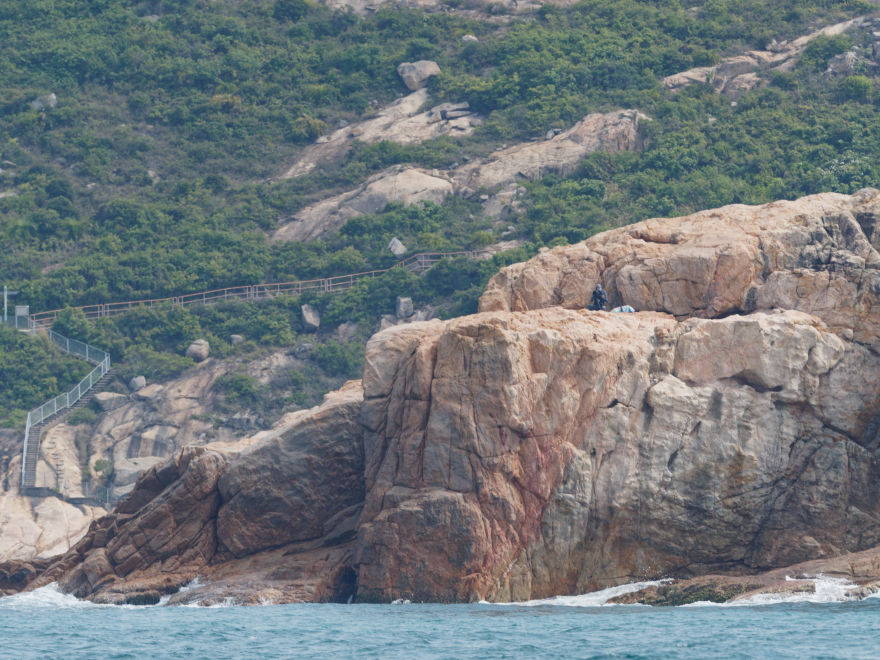
Mostly, seabird numbers are sparse – you’ve perhaps noticed there are no gulls lingering here as typical of many coastal areas, yet these trips are sometimes productive, and augmented by observers watching from land, especially a few hardy individuals who spend hours staring through binoculars and telescopes at the southern tip of Po Toi. Some tropical storms bring seabirds inshore in large numbers.
Ferry journeys can also offer a chance to watch seabirds. These include routes from Central to Cheung Chau and Mui Wo/Peng Chau, and serving Tolo Harbour destinations such as Tap Mun: particularly in late summer, when the ferries might be followed for at least part of the journey by terns catching fish in their wakes. Mostly, these are the locally breeding Black-naped, Bridled and Roseate terns: but passage migrants and even rarities like Brown Noddy or Sooty Tern might occur too.
Tubenoses
On a few days in a year, there might be tens or hundreds of shearwaters – pelagic birds belonging to the “tubenoses”, which also include albatrosses. These are so superbly adapted to life wandering the oceans that they can drink seawater, and excrete excess salt through tubular nostrils atop their beaks. Two species are annual here: Streaked Shearwater, and Short-tailed Shearwater.
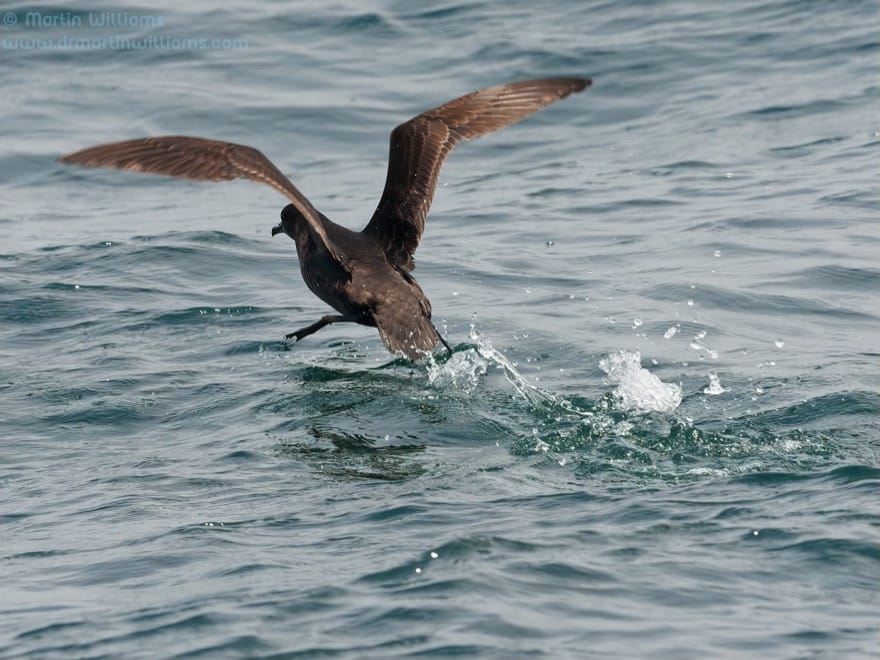
There may even be some Short-tailed Shearwaters around as this magazine reaches you. They aren’t spectacular to look at: all dark but for pale underwing bands, and tilting this way and that as they ride air currents low over waves in the manner leading to the name “shearwater”. But when it comes to migration, they are among the world’s greatest travellers.
Streaked Shearwaters breed in Australia – where a single colony in Tasmania hosts around 3 million nest burrows. And in the southern autumn, they depart northwards, on a journey of around 15,000km to the North Pacific and the Arctic Ocean beyond. Some travel via Hong Kong, arriving in late April with sightings also in May.
Frigatebirds
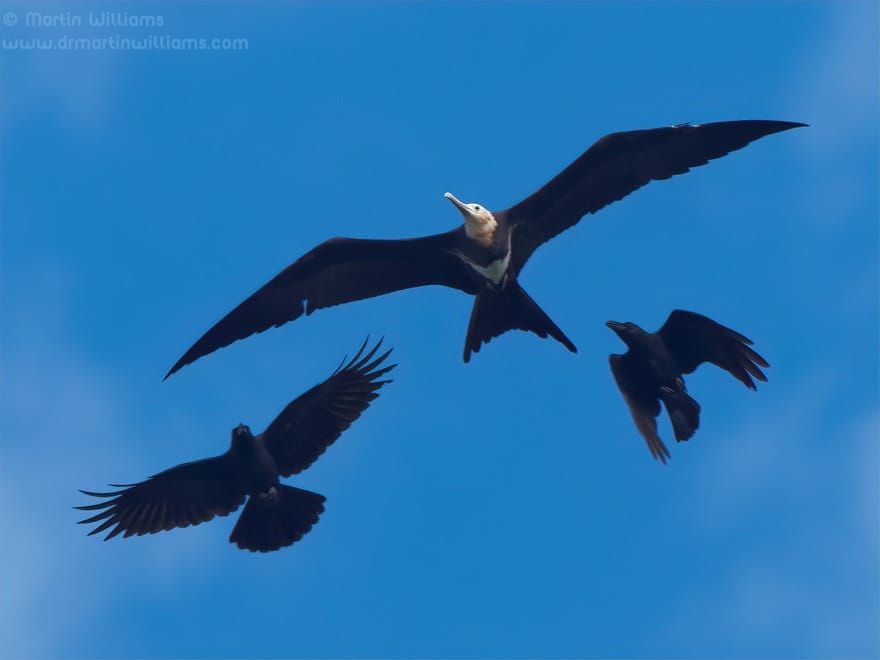
Frigatebirds are also adapted to a life at sea, though bizarrely, without landing on the sea as their feathers are not waterproof. They travel by soaring over tropical waters, even riding the updrafts of storms, and can remain airborne for weeks at a time, snatching bursts of sleep while in rising air currents. They’re agile, too – able to snatch flying fish and flying squid from above the surface, or pursue and bully terns that have caught fish until they drop them, a behaviour that prompted mariners to dub them “man-o-war birds”. Only a few individuals are seen here each year, though might linger for some time – such as a youngster that joined a Black Kite roost on Cheung Chau last year, attracting perhaps a few hundred bird photographers like a movie star drawing paparazzi.
So if you’re travelling through local waters, perhaps keep an eye out for bird life, which could add interest to your outings. With luck – and ideally some photos as evidence, you might add to notable sightings, or even discover a new species for the Hong Kong bird list.
